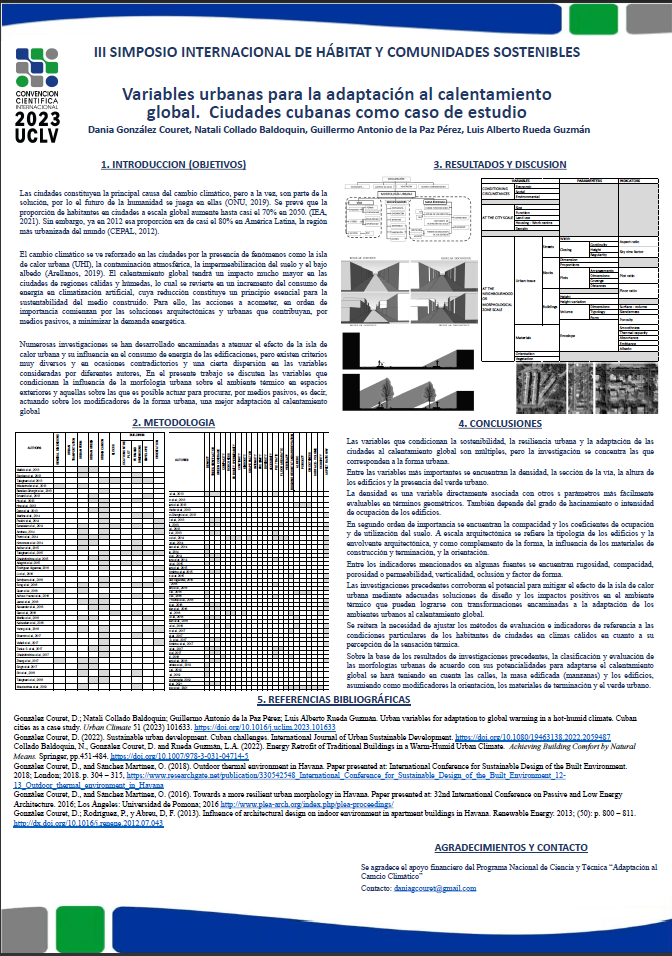Executive Secretary

2nd International Symposium on Habitat and Sustainable Communities
HAB-COM 2023

• Problem: There are diverse criteria about the influence of variable and parameter of urban morphology on the urban microclimate, especially in warm and humid climates,
• Objective(s): This article discusses the variables that condition the influence of urban morphology on the thermal environment in outdoor spaces and those on which it is possible to act to procure, by passive means, that is, acting on the modifiers of the urban form, better adaptation to global warming in hot – humid climates.
• Methodology: It corresponds to the first step of an ongoing research aiming to classify and to evaluate urban morphologies in Cuba in order to propose transformations for a better adaptation to climate change. The current theoretical investigation aimed at characterizing the state of the art, trends and good practices in this field. To facilitate the processing of the collected information, the variables identified by various authors were ordered by scales as well as by general and specific themes
• Results and discussion: According to the results, proposals to adapt the urban morphologies to the global warming will be done taking into account the street canyon, the built mass including buildings, and assuming orientation, finishing materials and the urban green as modifiers of the geometry, acting on the two last ones.
• Conclusions The definition of variables and indicators conditioning the adaptation of urban habitat to the climate change still requires new researches to precise its specificities in different climatic and morphological conditions.
• Problemática: Son muy diversos los criterios sobre la influencia de las variables y parámetros de la morfología en el microclima urbano, especialmente en climas cálidos y húmedos.
• Objetivo(s): Discutir las variables que condicionan la influencia de la morfología urbana en el ambiente térmico en espacios exteriores, y aquellas sobre las que es posible actuar para procurar por medios pasivos, es decir, actuando sobre los modificadores de la forma urbana, una mejor adaptación al calentamiento global en climas cálidos y húmedos. Caracterizar el estado del arte, las tendencias y buenas prácticas en este campo
• Metodología: Primera etapa de una investigación en curso que pretende clasificar y evaluar las morfologías urbanas en Cuba en aras de proponer transformaciones para una mejor adaptación al cambio climático. Para facilitar el procesamiento de la información colectada, se ordenaron las variables identificadas por varios autores por escalas, así como por temas generales y específicos
• Resultados y discusión: Según los resultados, las propuestas para adaptar las morfologías urbanas al calentamiento global se harán teniendo en cuenta la sección de vía, la masa construida incluyendo los edificios, y se asumirá la orientación, los materiales de terminación y el verde urbano como modificadores de la geometría, actuando sobre los dos últimos.
• Conclusiones: La definición de variables e indicadores que condicionan a adaptación del hábitat urbano al cambio climático aún requieren de nuevas investigaciones para precisar sus especificidades en diversas condiciones climáticas y morfológicas.
About The Speaker

Prof. Dania González Couret

Discussion